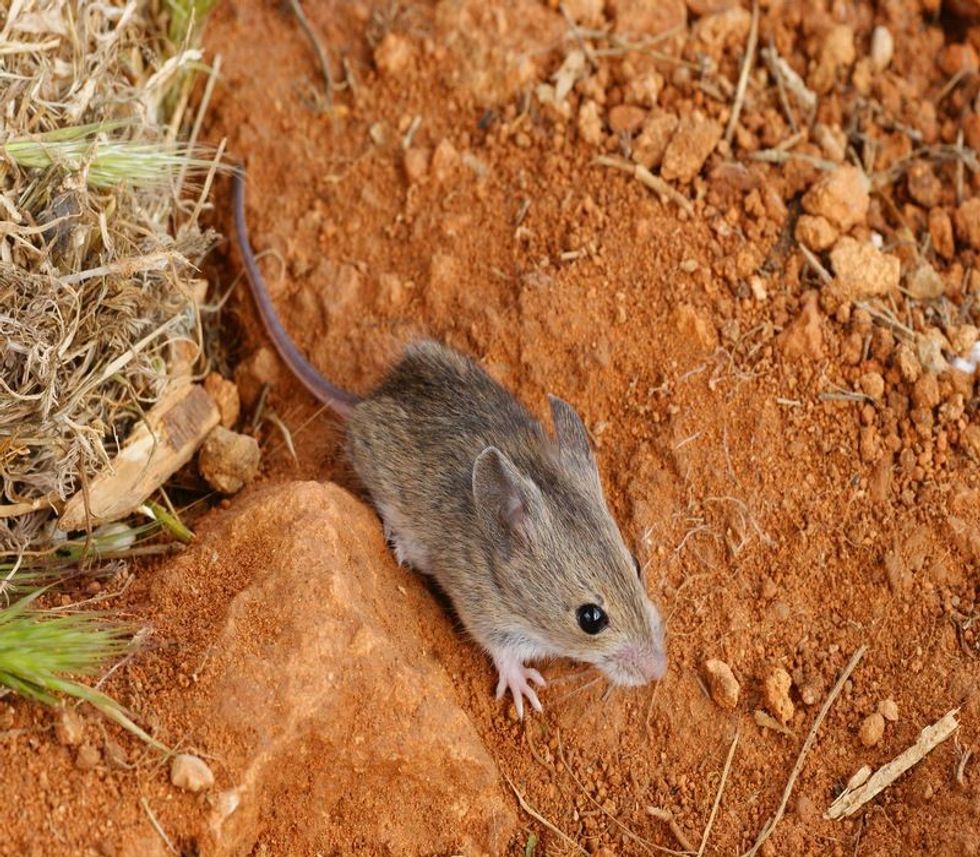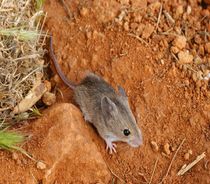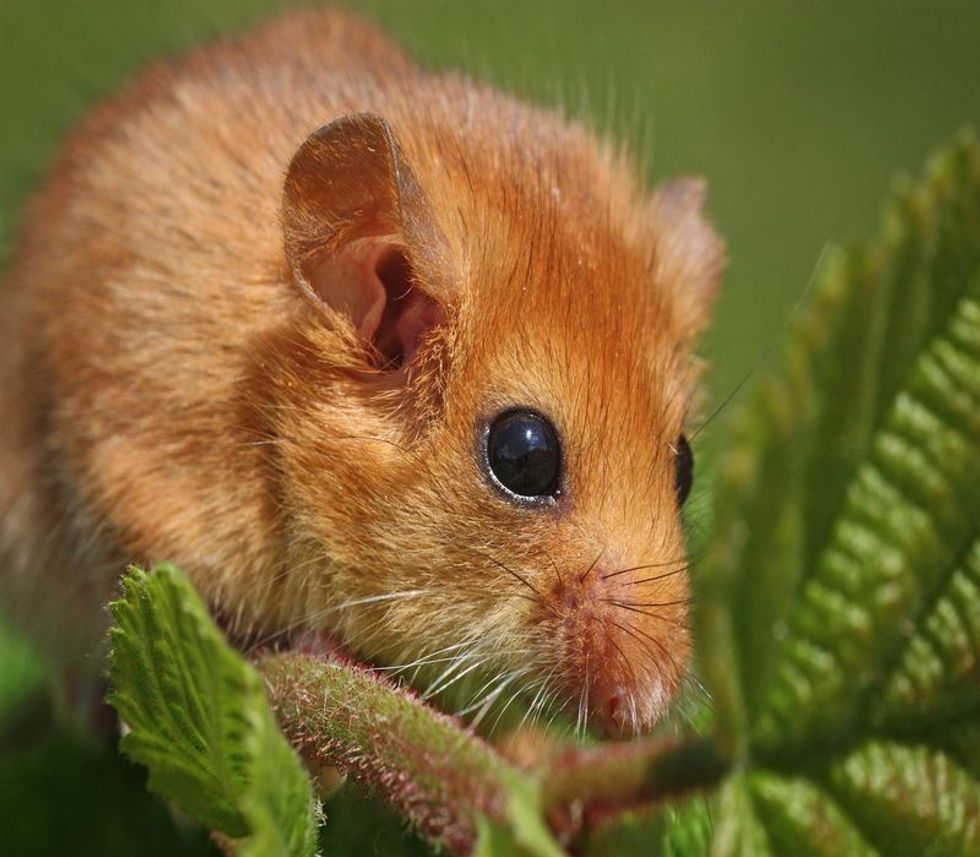Mice, hardly ever seen during the daytime, are nocturnal creatures that set out in search of food between dusk and dawn.
Mice are repelled by bright light and seek pleasure in the dark when everything around is asleep. However, mice may be seen scurrying across rooms that suggest a massive infestation or when they are faced with danger.
A mouse, belonging to the class Mammalia, family Muridae, and genus Mus, is a type of rodent. The scientific name of mice found in the home is Mus musculus.
The population of mice living in the wild has seen a significant decrease after they realized the perks of being in association with human settlements.
A usual house mouse is about 2.5-3.7 in (6.4-9.3 cm) long with a 2-4 in (5.1-10.2 cm) long tail that helps them to keep balance. It weighs around 1.4-1.6 oz (40-45 g), and its call resembles a high-pitched squeaking sound.
Their body is covered with brown or gray colored hair. Although found building nests in and around human habitations, they generally inhabit forest areas or fields all across the globe.
Their diet includes plant matter alongside their own droppings, which is a source of nutrition for them.
The females can reproduce 10 litters of 3-14 offspring in a year which is the reason behind their massive population and can survive for two to three years. Most of the time, they are seen hiding from predators such as rats, bats, cats, as well as one's pets in homes.
Keep reading to discover various facts about the mysterious mouse! You can also check out why do mice squeak and how many babies do mice have to discover interesting facts about them.
Why are mice most active at night?
Mice are crepuscular in nature; that is, they are most active from dusk to dawn. Again, mice are tiny creatures because of which they have to hide from several large animals. Hence, they tend to come out of their nest in search of food at night when the predators are asleep.
Mice are excellent at adapting to their surroundings. When they realized that they would have to encounter fewer dangers at night, they evolved as being crepuscular in nature and became most active during the dark hours.
This is the time when mouse activity is at its peak as they set out in search of food in order to avoid predators and carry out their food hunt in peace.
For being able to adapt to their surroundings well, they can resist bright daylight as well.
However, they tend to come out during the daytime only if they find a safe route to their food source from their nest. On other occasions, mice are found running and hurrying across rooms in broad daylight if there is a massive infestation or when they find their nest displaced.
Reasons Why Mice Seek Indoor Shelter
Mice that have shifted from living in forests to urbanized areas tend to live in homes. Although their diet includes plant matter, they generally eat whatever is available. They don't enter into others' territory unless it is empty.
Mice come to live in human habitations in search of food. Humans store lots of food in their home, which is a major attraction for mice.
A dirty, uncleaned home could be a rather cherished den for them to find and eat various food materials. As mice are light repellent, they prefer dark attics or garages to being inside the main house. Mice are predated by several animals such as bats, rats, cats, etc.
This is a major reason why mice tend to look for indoor shelter. Hence, running into mice inside your home isn't unusual, and one must opt for home remedies or can directly call the pest control services to eliminate them.
Signs of Mice Infestation And Their Common Hiding Places
One can identify several signs of a mouse infestation in their home. One of the major signs is when mice are found running and hurrying across in broad daylight. They could be nesting inside tiny boxes in attics or garages, inside food shelves, behind cupboards, in the gaps in between walls, and so on.
To begin with, a stale smell can be a sign that mice have been living inside your home. They have habits of making scratching sounds on walls and ceilings, which can be another sign.
Major signs of a mouse problem are gnawed holes in food stores and shredded paper. This is because mice tend to gnaw and shred paper with their front teeth.
If you find pet food missing, it is probably mice that have fed on it.
One may find droppings or grease marks on the floor from mice urine, which are signs of them being around. Nesting materials found inside one's home, gnaw marks on clothing materials, plastics, furniture, etc., are all signs of having mice around.
They also tend to gnaw holes on walls to make entry points into homes. One must ensure to control the mice population in their home at an early stage to avoid further inconveniences.
House Mice Versus Wild Mice

Identifying the differences between house mice and field mice may seem tricky but, when looked at closely, several distinct features can be identified. Being aware of these subtle differences can help one to get rid of these rodents easily.
They differ on several grounds, such as physical description, social behavior, lifespan, excretion, and the type of damage that they cause.
House mice are smaller than field mice whose body length ranges between 3-4 in (7.6-10.2 cm). The tails of house mice are hairy, while field mice have short hairless tails.
A house mouse's coat is brown or gray in color, while a darker coat with white underbellies is found in field mice.
Mice living in urban locations are lazy rodents that feed upon whatever is available while food is gathered and stored safely in trunks or nests built on trees by field mice. A mouse inhabiting houses builds its nest in attics or garages while the other dig burrows or holes in the ground or build nests inside tree trunks.
The lifespan of both these mice depends upon the availability of food resources. Hence, mice living as pets have a longer lifespan than the ones living in forests or fields.
Both of these mice are equally dangerous as they carry various bacteria that pose serious threats to the health of humans.
Finally, one major point of difference lies in their droppings and urine. The droppings of a field mouse have pointed ends while the others look like tiny rice grains, with their urine excreting a strong smell.
Measures To Control And Get Rid Of Mice
One must keep an eye out to identify signs of mice living inside their home. Mice multiply in number at a great speed. Hence, one must control and eliminate their population at an early stage. Here are some easy pest control tips to get rid of mice.
To limit the rodents from entering one's home, all the entry points such as wide holes and gaps found in walls or ceilings must be sealed. Mice are repelled by the smell of peppermint and clove, which can be used to drive them away.
One can prepare traps to get hold of the pests. These traps can be placed behind cupboards or near entry points.
As the mice fall into these traps, they can be moved outside. One can keep animals such as cats or dogs that can chase the mice away. Nonetheless, one can always call pest control services for direct assistance.
After driving them away, one must look for scratching sounds and grease marks to ensure that the pests have not returned. Mice tend to spread severe diseases for which one must ensure to control and prevent these rodents enetering their home.
Here at Kidadl, we have carefully created lots of interesting family-friendly facts for everyone to enjoy! If you liked our suggestions for are mice nocturnal, then why not take a look at how far can a skunk spray or silky pocket mouse facts?









